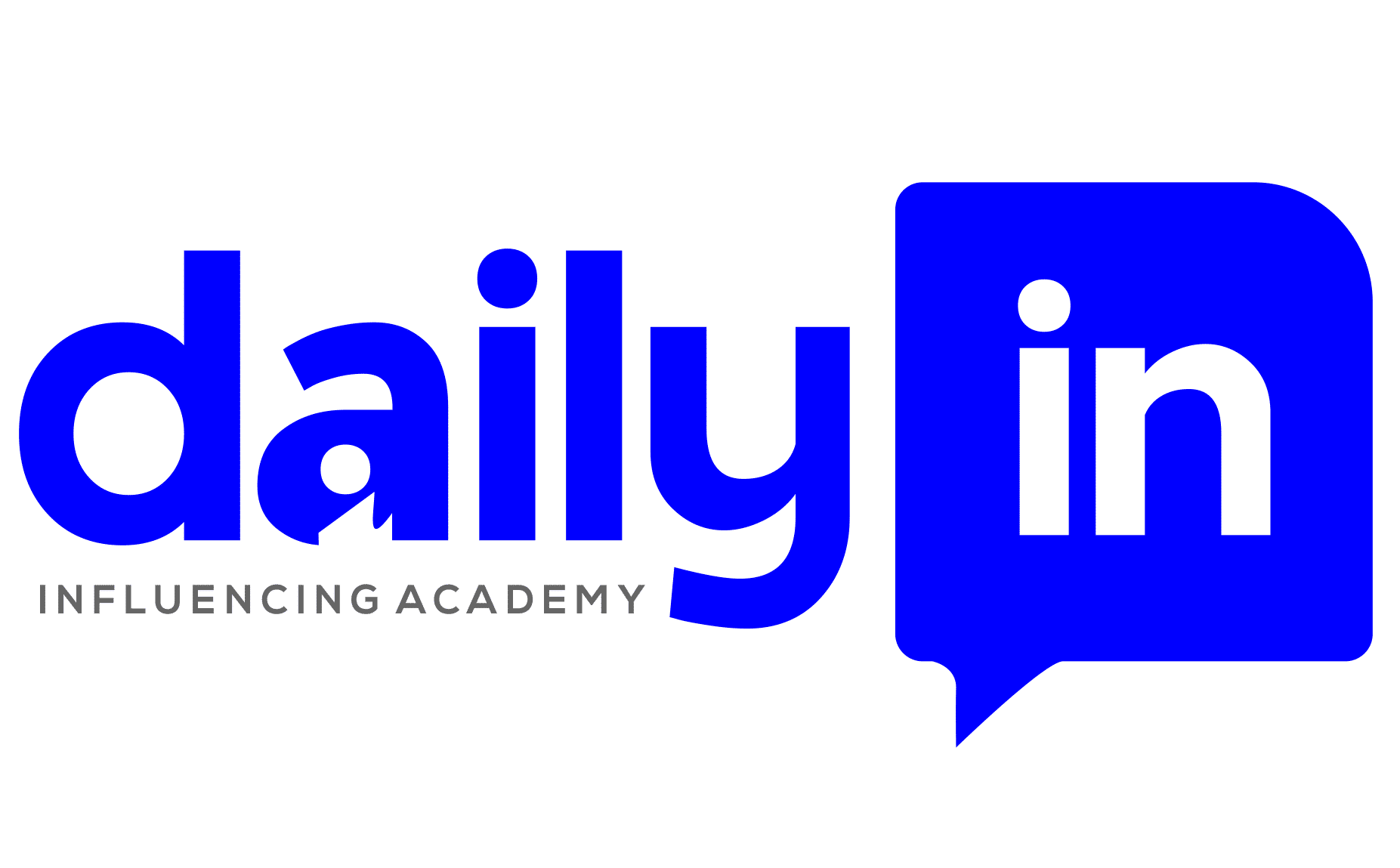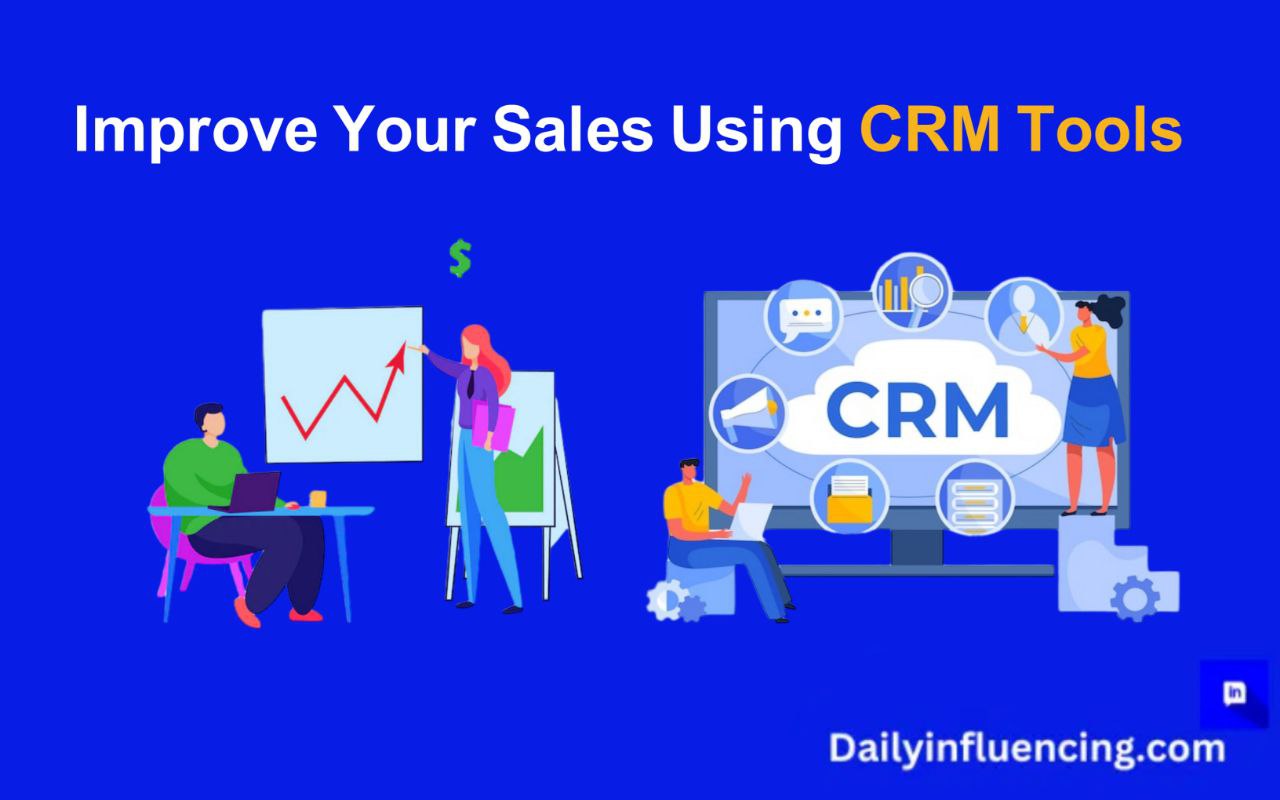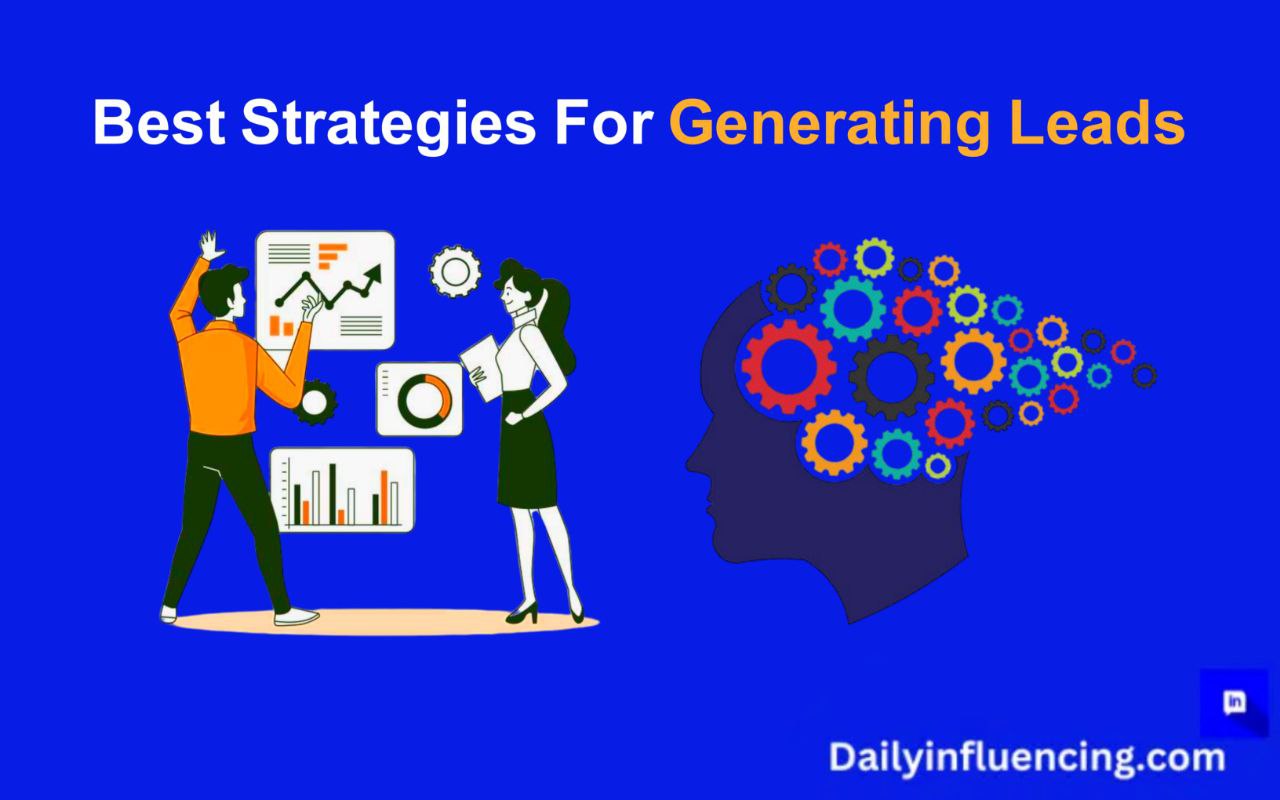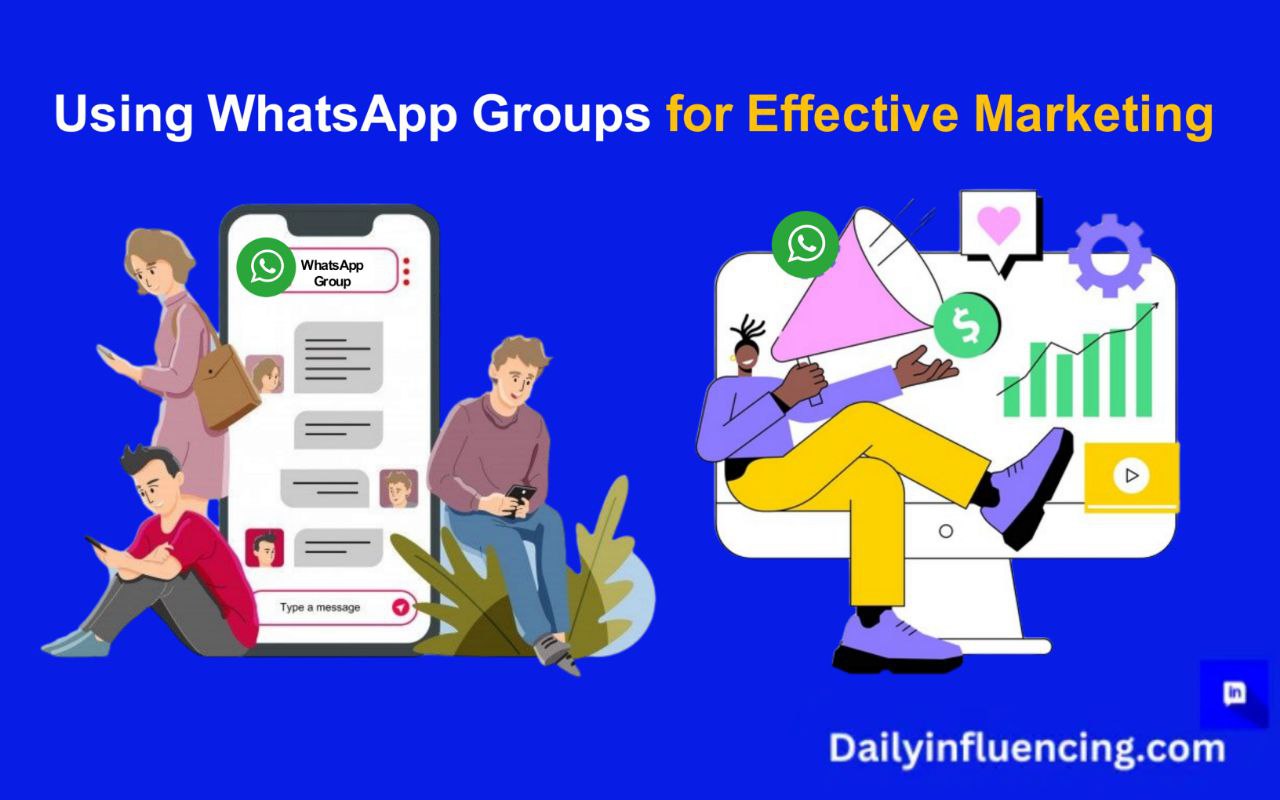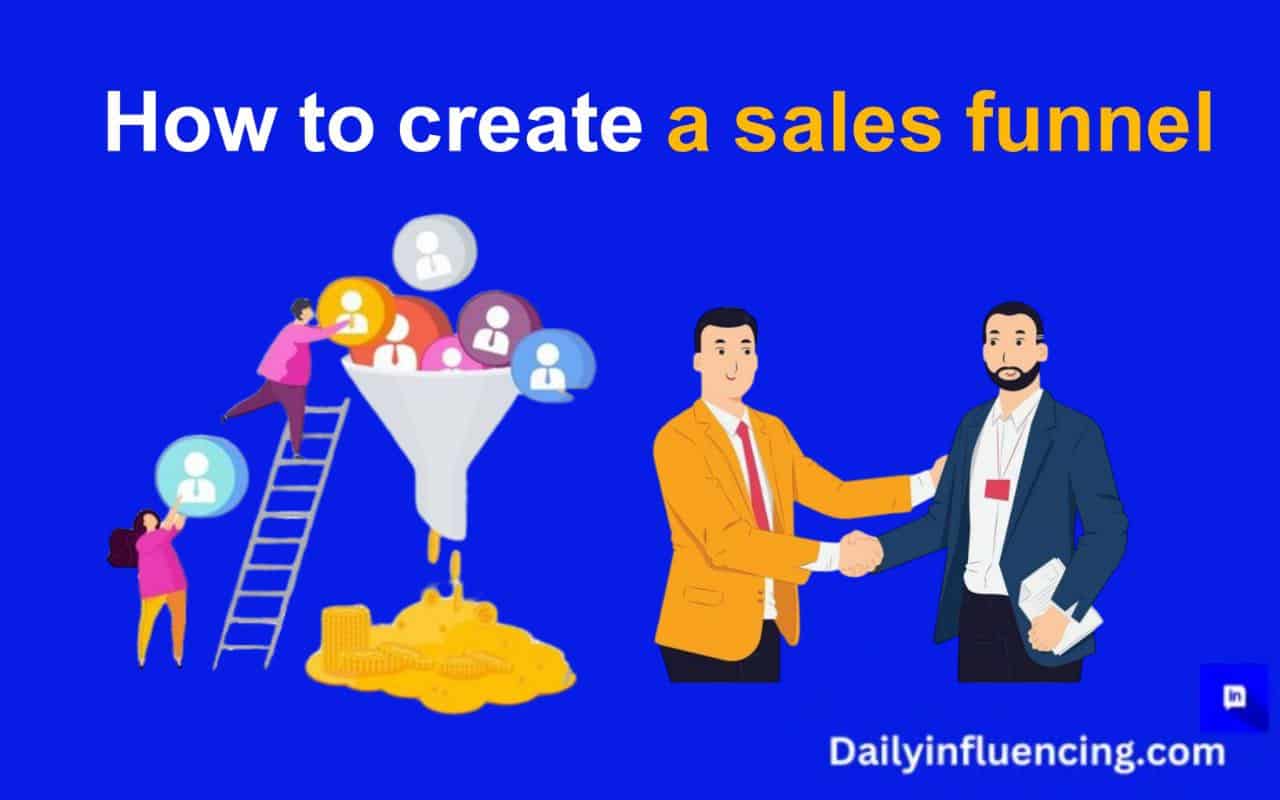
A sales funnel is a marketing strategy that has proven to be highly effective in converting leads into customers. It is a process that leads a prospect from the awareness stage to the action stage.
Building a sales funnel helps you to influence the buying decisions of your prospects.
Therefore, in this blog post, we’ll be looking at what a sales funnel is and how you can create one that will help you convert leads to clients.
What is a Sales Funnel
A sales funnel is a marketing concept that represents the customer journey from brand discovery to a loyal customer.
A good funnel takes your prospect from the first point of contact with your brand to the point where they make a purchase.
It is called a sales funnel because it looks like a funnel—wide at the top and narrow at the bottom.
The top is where all potential customers first interact with your brand. Here, you have a wide audience that you’re targeting.
As these potential customers move down the funnel, they become more aware of your product or service.
The bottom is where a sale is finally made.
A sales funnel can start from something as simple as an Instagram story or a LinkedIn post.
Why a Sales Funnel Is Important For Your Business
A sales funnel can benefit you in the following ways:
Visualize the Customer Journey
A sales funnel makes it possible to visualize the customer journey. It helps you to understand how customers move from prospects to buyers. This understanding makes it easy to identify gaps in your marketing strategy. When you create an effective sales funnel, you will have a clear picture of the different stages a customer goes through before making a purchase.
Identify Marketing Problems
Having a sales funnel allows you to understand the specific stages where your customers drop off from the funnel or experience difficulties moving ahead. This helps you to address these problems and improve your marketing business.
Targeted Marketing
By mapping out the sales funnel, you can tailor your messaging to be relevant to your target audience and create offers that will meet your customers where they are in the buying process. This helps to increase engagement and conversions.
Increased Sales & ROI
ROI simply means your return on investment. Create a well-defined and optimized sales funnel that will guide more customers to purchase your product or service increasing your sales and ROI.
The 3 Parts Of A Sales Funnel
There are three parts of a sales funnel that helps you put out targeted content for your customers.
1. Top Of Funnel (TOF)
The aim here is to reach as many prospects in your target audience as possible. This constitutes the widest part of the funnel. When your customers are still here, it is important to engage them, provide value and give your prospects reasons to trust your brand. This is the part of the funnel where your prospect becomes aware of you in the online market.
Putting out relevant and engaging content will help you retain your prospects and move them further down the funnel.
Middle Of Funnel (MOF)
Here, your prospects are nurtured in order to move them further down the funnel. In essence, you’ve attracted and built a relationship with them. The goal here is to position your product or service as the best solution.
At this part of the funnel, your prospects are gathering more informations, and trying to understand if your service will suit their needs. Hosting a webinar to provide premium value and explain what your product or service can do for them will help you move your prospects further down the bottom of the funnel.
Additionally, you get to understand what objections your prospects have regarding your product or service. This is the stage where you clear all objections and understand what exactly is going on in the minds of your audience. The middle of the funnel is what determines whether your audience will either drop out or move further down.
Bottom Of Funnel (BOF)
This part of the funnel is where your potential customer makes the decision to purchase. The goal here is to provide the information your prospect needs to buy and make the buying process as seamless as possible. In this part of the funnel, you can decide to offer a discount to your first 50 prospects who are ready to buy.
Furthermore, you can host consultations where you get to show them how you can personalize your product or service to suit their needs. The goal of every sales funnel is to get your prospects to the bottom of it.
The Sales Funnel Stages
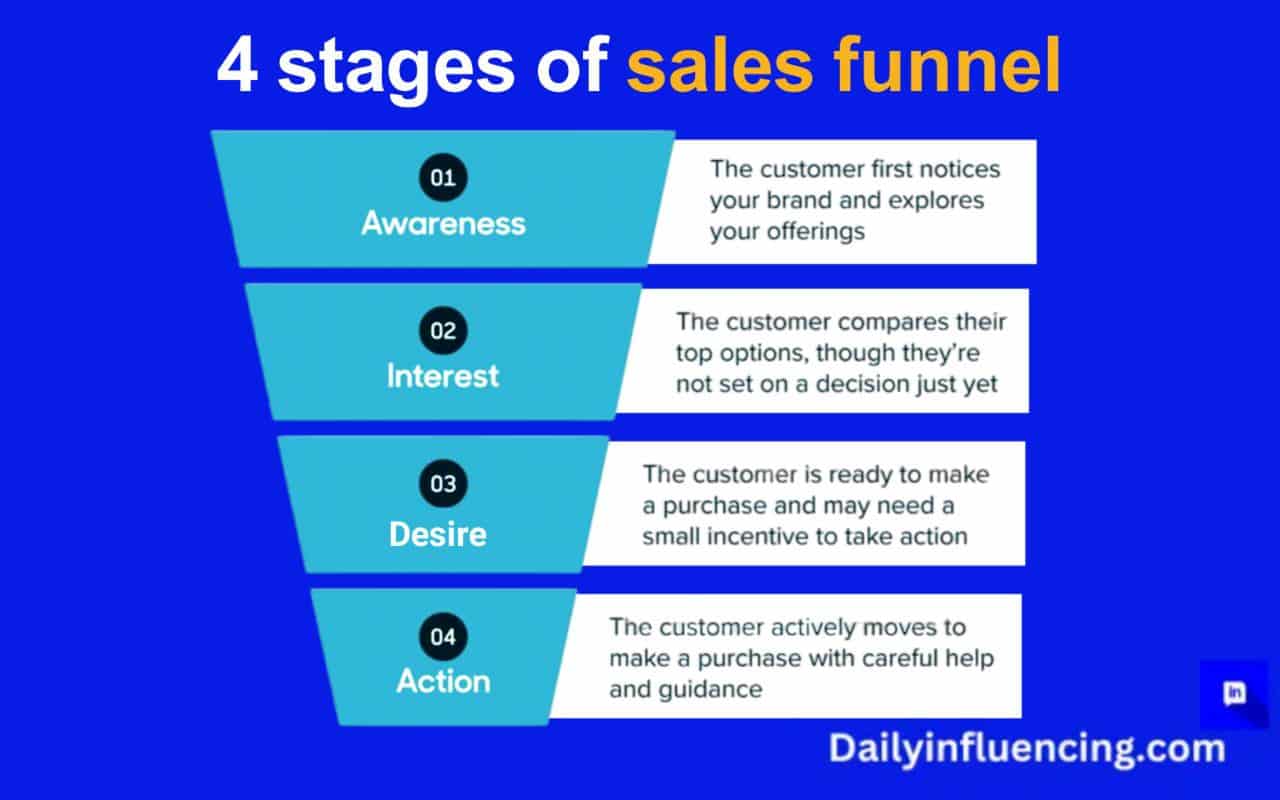
Different companies use different stages for their sales funnel. But there are four major stages that help you understand the journey your customer goes through. It’s also called the AIDA formular.
1. Awareness
This is the top of the funnel where your potential customers first come in contact with your business, product or service.
In essence, your potential customer can become aware of your business through an instagram story, an ad or a LinkedIn post.
Once a prospect becomes aware of your services or products, they’ve entered your sales funnel. The next thing to do is to guide them further down the funnel.
At the awareness stage, you can put out content that will compel and attract your audience. This helps to build trust and credibility for your brand or business. When this happens, your potential customers will develop an interest in your product or service.
2. Interest
At this stage, your prospect is becoming more interested with your brand. This is the engagement phase where your prospect makes little efforts like commenting on your post, liking your content or even reposting.
Your goal here should be to put out valuable and engaging content that educates the customer about your product or service. At the interest stage, your potential customer has not made any serious moves to buy from you. Showing an interest in your content does not always mean your potential customer will buy from you.
That is why you have to start putting out targeted content to show them how much your product or service can help them. Therefore, understanding your target audience completely will help you put out targeted content that will speak directly to them.
3. Desire
Your prospect has become aware of your brand and has begun to show interest in your product or service. This is the stage where they start comparing your services with that of your competitors. Your goal here should be to provide compelling content that will sway their decision in your favour.
At the desire stage, your potential customer is doing a lot of market research, trying to figure out if they should go with you or your competitors. You have to be able to deal with all obstacles and questions that your potential customers might have at this stage in order to convert them to the last stage of the funnel.
4. Action
This is the final stage of the sales funnel. Here, the prospect takes action by purchasing a product or service. Once a potential customer turns into a paying customer, there is need for relationship building as that customer can end up becoming a loyal fan of your business.
How To Create A Sales Funnel
You’re already aware of how important a sales funnel is to your business. In addition, you’ve seen how having one can give you an insight into your customer’s journey and help you tailor each stage to be unique to your prospect.
Now, let’s look at how to create a sales funnel that will help you convert more leads and potential customers to paying customers.
1. Customer Research
To build a sales funnel, you need to be very clear on who you’re targeting—Moreover, you can’t sell to an audience without understanding who they are and what they like.
Getting clear on your audience needs, wants and desires helps you to target prospects at the top of the funnel.
This also helps you to increase the quality and quantity of leads who become aware of your product or service.
For instance, if you’re in the digital marketing niche and you’re trying to sell a course—you need to understand who your audience is.
You can create a buyer persona of your target audience listing important facts like age, gender, income, beliefs, location.
Being fully aware of this helps you to tailor your marketing campaigns to suit your audience and draw them into your funnel.
2. Create High Quality Content
Once you’re done with customer research, the next step is to put out engaging content that speaks to their pain points and future outcomes. For instance, is your target audience people trying to make money from social media?
Do they want to retire by the age of 50?
When you know this, you can create quality content that helps you build up more awareness and interest in your brand.
The best kinds of content are content that solves your audience’s problem. When you create such content, it helps you to build credibility to your business and positions you as an authority.
Informative and engaging blog posts, social media content, carousels and YouTube videos are few ways you can create engaging and valuable content for your audience.
3. Build A Landing Page
A landing page is a page where a prospect gets to learn more about your business, product or service.
For instance, you identified your audience as college kids looking for internship roles. And you put out content educating and informing them on how internship roles can help them and the kind of internship roles they should apply for.
In your content, you have a link that promises them they can get templates they can use to apply for those roles. They click on the link and land on your landing page.
Your landing page is now your opportunity to impress your customers and move them further down the sales funnel. Therefore, building a landing page that is very easy to navigate is key to moving your prospects to the next stage.
Your landing page needs to expand on the promise made on the content.
For instance, telling them more about the templates, people it has worked for and putting out reviews of other college students is one way to get them very much interested in your offer.
4. Optimize Your CTAs
Your landing page needs to have a clear and strong CTA that tells them exactly what to do next. Is it downloading a free ebook, or reading a blog or getting access to a webinar.
Your CTA is there to encourage them to move to the next stage of the funnel. Without a clear CTA, your audience will lose probably lose interest as there’s no guide on what to do next.
In addition, your CTA has to be set at strategic places that your audience can see and act on. Using our instance above, the CTA could be “Download your free templates here”.
5. Generate Leads For An Effective Sales Funnel
Once a prospective customer clicks on the CTA link, they are moved to the next stage. At this stage, this is where they share their information to get your free product or service.
Once a prospect has shown this kind of interest in your product or service, it is time to motivate them to take more action which will lead them further down the sales funnel. A lead magnet is the best way to do this and using our instance, our lead magnet is the free template we’re giving out to college students.
So, when the prospect click on the CTA to download the template, their contact information such as first name and email address is required.
Once the prospect signs up to get the template, they are automatically added to your email list where they are nurtured to become paying customers.
6. Nurture The Leads In Your Sales Funnel
To be able to create an effective sales funnel that converts leads to paying clients, it is important your leads stay in the funnel till the end.
However, this will not be possible if you don’t nurture your prospective clients. Nurturing your audience is simply your ability to keep on engaging with them and increasing their interest in your product or service.
This is done best through email marketing. For instance, using our example from the beginning, after your prospective clients have clicked on the link and requested to get the templates by filing in their names and email address, they are added to an email list.
Emails have proven to be one of the best ways to reach your audience directly, therefore, you will continue to put out valuable and targeted content that will help your audience and warm them up.
At this stage, you can segment your audience in order to also retarget potential customers who are beginning to lose interest.
7. Incorporate Social Proof
Taking your customer on a journey using your sales funnel becomes very effective when they trust you. This helps to reduce friction and obstacles that can lead your customers away from the funnel.
Social proof has shown to be very effective as people love to know that your product or service worked effectively for someone else.
Social proof like customer testimonials, product review or case studies are proven ways to keep your audience in the funnel.
8. Close The Deal
At this stage, your prospect is about to make a sale. This is where you need to follow up more than ever. Your potential customer can still fall out of the funnel even at this stage.
Reduce the buying friction to the barest minimum and make the switch from potential customer to paying customer very seamless.
9. Keep The Process Going
At this point, you’re prospect has either been converted to a paying customer or not.
When the prospect becomes a customer
Keep the relationship alive. The prospect has gone through the funnel and become a paying customer. However, you need to continue building the relationship.
Put out engaging content that helps improve customer loyalty and trust. This helps you retain your customers and upsell them on future offers.
If the prospect does not make a purchase
Continue putting out engaging and relevant content through emails. Here, you can down sell the prospect to a lower offer. This helps you meet your prospect at the point they are in. Put out targeted email campaigns and polls to understand their objections and what’s hindering them from becoming paying customers.
10. Optimize Your Sales Funnel
It doesn’t end at creating a sales funnel or even making a sale.
The goal of every sales funnel is to help you move more prospects that started the journey from the awareness stage to take action.
So it’s important to continually look for ways to optimize your sales funnel. Use A/B testing to find out what works best.
11. Track and Analyze Key Metrics For Your Sales Funnel
Use Key performance indicators (KPIs) to determine how well your sales funnel works. Track metrics like customer acquisition, conversion rates and click-through rates. Use data gotten from the awareness stage down to the action stage to adjust and refine your sales funnel.
Conclusion
A sales funnel is a term that describes how a prospective customer moves from the awareness stage to the action stage.
However, not everyone who got into the sales funnel will take action at the end.
But it’s always important to try and move most of your prospects to the action stage as this is the main goal of creating a sales funnel.
Create your sales funnel today and use the different parts and examples mentioned above to make the most out of your business.
Do you have an active sales funnel for your business?
Bookmark this post and keep it handy as a guide to creating your sales funnel
